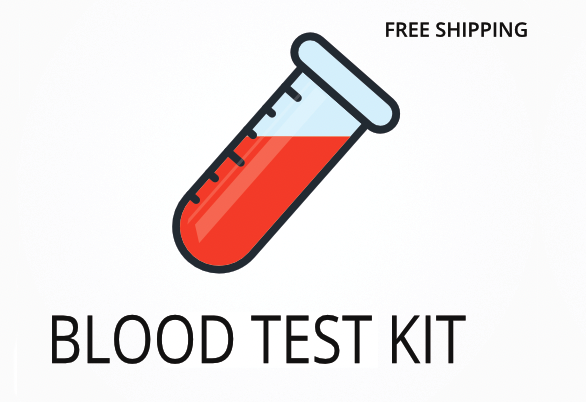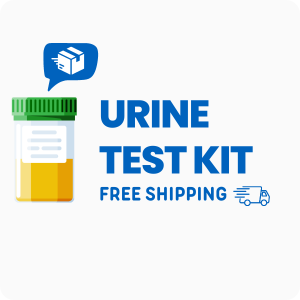Ordering the IgE Molds Test | New York
Ordering the IgE Molds Test | New York helps pinpoint specific mold allergies by measuring immune system reactions to 15 common molds and total IgE levels. This test is especially useful for those experiencing ongoing symptoms that may be linked to mold exposure, such as sneezing, coughing, or skin irritation. Interestingly, some people may develop mold allergies even if they have never lived in a visibly moldy environment, as mold spores can travel through air and settle in unexpected places.
When ordering this test, you gain access to:
- Identification of specific mold allergens causing symptoms
- Measurement of total IgE to assess overall allergic response
- Clear results that can guide targeted allergy management
- Support for decisions about home or workplace mold remediation
- Objective data to share with your allergy specialist or doctor
Who Should Consider Mold Allergy Testing
People who have unexplained nasal congestion, frequent sneezing, or skin rashes that seem to worsen in damp environments may benefit from this test. For example, someone who notices increased coughing and watery eyes after spending time in a basement or older building could use this test to find out if mold is the cause.
Ordering this test may also be helpful in these situations:
- Recurring sinus infections that do not improve with standard treatments
- Asthma symptoms that flare up in certain locations or seasons
- Unexplained fatigue or headaches that seem to follow exposure to musty areas
- Skin rashes that appear after cleaning or moving stored items
- Unexpected allergy symptoms after using a humidifier or air conditioner
Testing for mold allergies provides clear answers about which molds are triggering symptoms, allowing for more focused treatment and environmental changes. Delaying this test could mean continued exposure to mold allergens, which may lead to more frequent or severe symptoms over time.
Preparing for Mold Sensitivity Blood Testing
Fasting is not required for this test, but always check the test kit instructions for any special preparation steps. Make sure to carefully follow any directions your doctor or healthcare provider gives you to ensure the sample is collected correctly and results are meaningful.
Labs Included When Ordering Your IgE Molds Test
| Test Name | Reference Range | What This Biomarker Means | Low and High Levels of IgE Molds Test |
|---|---|---|---|
| Specific Mold IgE Markers | |||
| Alternaria tenuis IgE | <0.35 kU/L | Measures allergic response to Alternaria, a common outdoor mold linked to respiratory symptoms and asthma. |
High levels mean you are likely allergic to Alternaria and may react when exposed.
Low levels mean you are unlikely to have an allergy to this mold. |
| Aspergillus fumigatus IgE | <0.35 kU/L | Detects sensitivity to Aspergillus, a mold found in soil, dust, and decaying matter, often linked to lung issues. |
High levels mean you may have allergic reactions or breathing problems when exposed.
Low levels mean you are not likely to react to Aspergillus. |
| Candida albicans IgE | <0.35 kU/L | Assesses allergic response to Candida, a yeast that can cause skin and mucous membrane irritation. |
High levels mean you may have skin or digestive symptoms after exposure.
Low levels mean you are unlikely to be allergic to Candida. |
| Cladosporium herbarum IgE | <0.35 kU/L | Measures reaction to Cladosporium, a mold often found indoors and outdoors, linked to nasal and respiratory symptoms. |
High levels mean you may have sneezing, congestion, or asthma when exposed.
Low levels mean you are not likely to react to this mold. |
| Curvularia lunata IgE | <0.35 kU/L | Detects allergy to Curvularia, a mold that can cause sinus and respiratory symptoms, especially in humid climates. |
High levels mean you may have sinus or breathing issues after exposure.
Low levels mean you are unlikely to be allergic to Curvularia. |
| Epiccoccum purpurascens IgE | <0.35 kU/L | Assesses sensitivity to Epiccoccum, a mold found in soil and air, sometimes linked to hay fever symptoms. |
High levels mean you may have allergy symptoms like sneezing or itchy eyes.
Low levels mean you are not likely to react to Epiccoccum. |
| Fusarium moniliforme IgE | <0.35 kU/L | Measures allergic response to Fusarium, a mold found in plants and soil, sometimes linked to respiratory irritation. |
High levels mean you may have coughing or throat irritation after exposure.
Low levels mean you are unlikely to be allergic to Fusarium. |
| Helminthosporium halodes IgE | <0.35 kU/L | Detects allergy to Helminthosporium, a mold found in grass and soil, sometimes causing nasal or eye symptoms. |
High levels mean you may have sneezing or itchy eyes after exposure.
Low levels mean you are not likely to react to Helminthosporium. |
| Mucor racemosus IgE | <0.35 kU/L | Assesses sensitivity to Mucor, a mold found in decaying organic matter, sometimes linked to sinus symptoms. |
High levels mean you may have sinus congestion or headaches after exposure.
Low levels mean you are unlikely to be allergic to Mucor. |
| Penicillium notatum IgE | <0.35 kU/L | Measures allergic response to Penicillium, a mold found in food and indoor air, often linked to nasal and breathing symptoms. |
High levels mean you may have nasal congestion or asthma after exposure.
Low levels mean you are not likely to react to Penicillium. |
| Phoma betae IgE | <0.35 kU/L | Detects allergy to Phoma, a mold found in soil and plants, sometimes causing mild respiratory symptoms. |
High levels mean you may have mild breathing or nasal symptoms after exposure.
Low levels mean you are unlikely to be allergic to Phoma. |
| Pityrosporum orbiculare IgE | <0.35 kU/L | Assesses sensitivity to Pityrosporum, a yeast found on skin, sometimes linked to rashes or itching. |
High levels mean you may have skin irritation or rashes.
Low levels mean you are not likely to react to Pityrosporum. |
| Rhizopus nigricans IgE | <0.35 kU/L | Detects allergy to Rhizopus, a mold found in decaying food and plants, sometimes causing nasal or eye symptoms. |
High levels mean you may have sneezing or watery eyes after exposure.
Low levels mean you are unlikely to be allergic to Rhizopus. |
| Stemphylium botryosum IgE | <0.35 kU/L | Measures allergic response to Stemphylium, a mold found in plants and air, sometimes linked to mild allergy symptoms. |
High levels mean you may have mild allergy symptoms after exposure.
Low levels mean you are not likely to react to Stemphylium. |
| Trichoderma viride IgE | <0.35 kU/L | Assesses sensitivity to Trichoderma, a mold found in soil and decaying wood, sometimes causing mild respiratory symptoms. |
High levels mean you may have mild breathing or nasal symptoms after exposure.
Low levels mean you are unlikely to be allergic to Trichoderma. |
| General Allergy Marker | |||
| Total IgE | 0-100 kU/L (adults) | Shows the total amount of IgE antibodies in the blood, which rise with allergies, asthma, or certain immune responses. |
High levels mean you may have one or more allergies or allergic conditions.
Low levels mean you are less likely to have active allergies. |
Reference ranges may change slightly as labs update their standards, so always review your results with your healthcare provider for the most current interpretation.
IgE Molds Test FAQ
Is there IgE Molds Test testing near me?
This is a blood test kit that can be collected at a local draw site; check the draw location link at the top of the page. For those with ongoing allergy symptoms, having a nearby collection site makes it easier to get tested quickly and avoid delays in finding out which molds may be causing problems.
How do I interpret the test results?
While your treating physician should review your results, you can also use our one-on-one test results review service with our clinical team for a detailed explanation and next steps.
What is the cost of the test?
The price shown includes standard shipping to you and return shipping to the lab, but local draw fees may apply. Ordering this test can help you identify specific mold triggers, which may speed up relief from allergy symptoms.
How often should I retest?
Retesting is usually recommended every 12 to 24 months, or sooner if symptoms change or after significant mold exposure. Regular testing helps track changes in your allergic response and supports more effective symptom management.
How accurate is the test?
This test uses ImmunoCAP technology, which is a highly specific and sensitive method for detecting IgE antibodies to molds. Specificity is 98% and sensitivity is 96%. TrueHealthLabs.com partners with CLIA-certified and CAP-certified laboratories to uphold rigorous testing standards for dependable results.
Important Notes
Immunosuppressants such as prednisone and steroids will alter test results. Talk to your doctor before testing.
Medical Review Board
Reviewed by Jeff Donohue M.D. from Body Logic and Brady Hurst DC, CCCN. Written by True Health Lab’s team of editorial health contributors.
Disclaimer: This information is for educational purposes only and not intended as medical advice. Consult your healthcare provider for personalized guidance.
Why Customers Trust True Health Labs - What People are saying
Also rated 4.6 out of 5 based on 3452 ShopperApproved reviews- See all TrueHealthLabs.com reviews.







